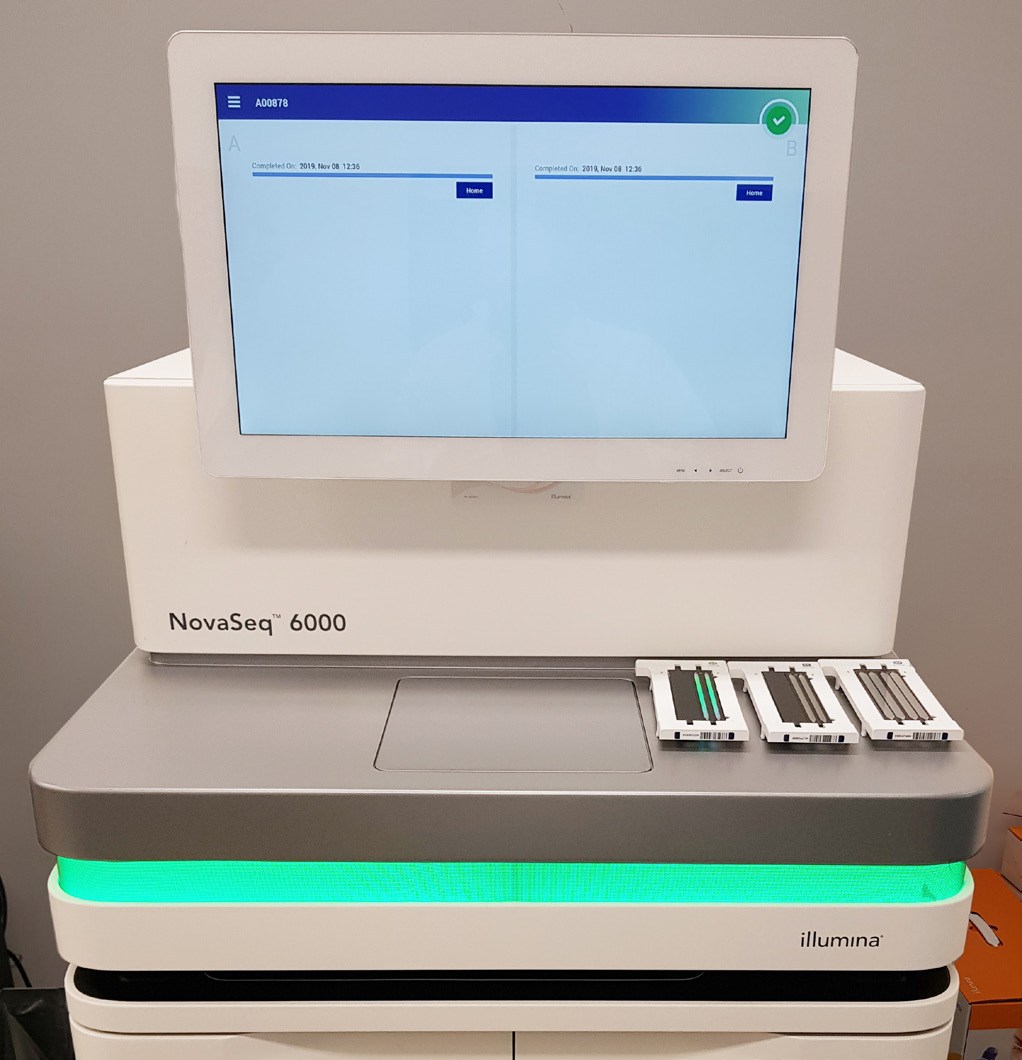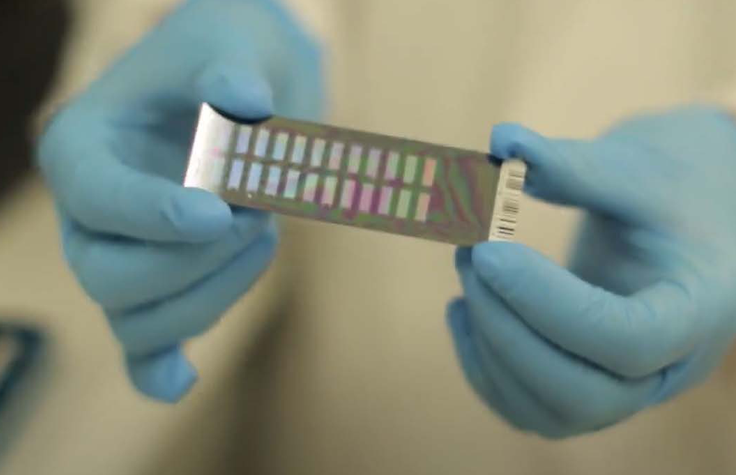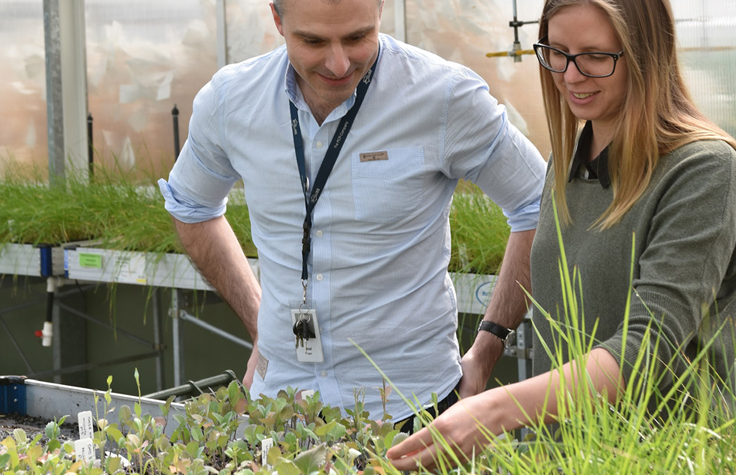Australian Crop Breeding Research Benefits from Advanced Sequencing with Consistent Methodologies
Summary
Overview:
The Agriculture Victoria Molecular Genetics team supports Australian crop breeders with high-throughput genetic analysis.
Challenge:
Multiple genes contributing to critical varietal traits in crop breeding need to be identified efficiently.
Solution:
Infinium XT high density multi-species SNP chip technology.
Benefits:
Agriculture Victoria team to reliably scan up to 50,000 SNPs at a time, helping crop breeders to reliably detect complex traits in their breeding programs.

Dr. Noel Cogan is the team lead for the Molecular Genetics team for Agriculture Victoria, based at AgriBio, Centre for AgriBioscience on La Trobe University campus in Melbourne.
Introduction
Dr. Noel Cogan heads the Molecular Genetics team for Agriculture Victoria, based at AgriBio, Centre for AgriBioscience on La Trobe University campus in Melbourne.
The team provides genetic research for all sectors of Australian agriculture, including breeders of major field crops such as wheat, barley, canola, lentils and peas.

The Agriculture Victoria lab operates several advanced genomic sequencing systems, including a large Illumina NovaSeq 6000, two smaller Illumina MiSeq systems and the highly automated Illumina iScan system.
These systems allow Dr. Cogan’s team to deliver research and innovation services requiring large and small sequencing capabilities, as well as innovative SNP (Single Nucleotide Polymorphism) chip scanning.
New Systems Accelerate Throughput
Less than ten years ago, Dr. Cogan’s team at AgriBio generated 50 trillion nucleotides of DNA per year. With their newer Illumina systems, they can now generate 4 trillion nucleotides per day.
The advances are particularly exciting for Australia’s grain industry, as they save plant breeders time and improve accuracy when developing new varieties.
Illumina’s Consistency Adds to Efficiency
Although the researchers can now analyse crop genomes up to a hundred times faster than before, their work has also been enhanced by the way Illumina has retained a consistent sample preparation methodology over many years.
“Using newer platforms like Infinium XT, we can get infinitely more data in a fraction of the time and for a fraction of the cost, so we are constantly advancing our plant-science knowledge.”
Dr. Cogan says that Agriculture Victoria’s lab technicians can prepare their samples in familiar ways, even as the systems they are using have been revolutionised. This has helped make the laboratory be more effective and enabled them to build on previous research.
“We can take a grain or leaf sample that was prepared ten years ago and put it through the latest sequencer,” he says.
“It gives us great flexibility to re-sequence or re-analyse a sample and generate new data that was too time-consuming or costly to obtain previously.
SNP Chips Provide Speed, Accuracy and Reliability
According to Dr. Cogan, the way SNP chips allow the research team to search quickly and specifically within a genome means they can process large numbers of samples very time- and cost-effectively.

As throughput rates have increased, the cost of genetic analysis has plummeted, dramatically reducing the time and money crop breeders must invest to deliver sustainable commercial improvements to growers.
“Our Illumina Infinium XT high density multi-species chip can assay up to 100,000 genomic features in a single scan,” he says.
“We have also developed a combined chip for wheat and barley with Intergrain that will reliably scan 40,000 SNPs at a time, and a multispecies pulse SNP chip with 30,000 features from lentil, chickpea, field pea and lupin with Grains Research and Development Corporation (GRDC).”
Improving Outcomes for Australian Crop Breeders
Dr. Cogan says high speed scanning benefits crop breeders because the vast majority of traits-of-interest to agriculture are controlled by interactions between a large number of different genes rather than just one or two. Being able to efficiently locate and identify all those genes within a genome is the key to crop breeding success. He uses blackleg resistance in canola as an example, explaining that the genetic basis for resistance to this devastating disease is controlled by a handful of genes of major effect but many other genes also contribute to the overall trait.
The interaction between these various genes explains the plant’s overall disease resistance.
“Plant breeders can develop more resilient and productive crops more efficiently, thanks to the ongoing advances in genomic analysis.”
“We believe that all the blackleg resistance genes historically identified accounted for about a third of the total genetic resistance that is available”, he says.
Dr. Cogan says this means there is a large, untapped resource of genetic resistance that is still to be applied from within the canola genome, using these more advanced sequencing and genotyping methods.
“We have not had the technology to access this resource until now,” he says.
Learn more about the products and systems mentioned in this case study:
Illumina NovaSeq 6000 System
www.illumina.com/novaseq
Illumina iScan
www.illumina.com/iScan
Illumina Microarray Technology
www.illumina.com/science/technology/microarray.html
Illumina Infinium XT Micoarray Solution:
www.illumina.com/products/by-type/microarray-kits/infinium-xt.html
